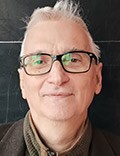Can Europe Fulfill Its Future Healthcare Demands?
In the European Union (EU), an estimated 7 million people will be working in the healthcare profession by 2035. This might sound like a lot, but experts are concerned it won’t be enough to satisfy the needs of a growing population of over-65-year-olds, which has risen from 16% to 21% in the past two decades and is projected to approach nearly 30% by 2050.

“The supply of health workers has increased over the past two decades, but demand has increased much more,” said Francesca Colombo, head of the Health Division at the Organisation for Economic Co-operation and Development (OECD), speaking with Medscape Medical News. This is placing healthcare workers under immense pressure, she said.
Experts warn that a comprehensive European strategy is needed now that involves better preparation of its workforce, addressing data gaps, and improving retention.
“Health and care are two of the sectors most affected by labor shortages in the EU,” said Eva Hrncirova, European Commission spokesperson for health, speaking with Medscape Medical News.
These shortages are so substantial that the World Health Organization (WHO) has projected that the EU will be facing a deficit of 4.1 million healthcare professionals by 2030, including 0.6 million doctors, 2.3 million nurses, and another 1.3 million healthcare workers.
Healthcare Lost Among the Specialties
The issue is not merely one of overall numbers.
There are also shortages within specific specialties and across geographies. For example, the EU is facing a shortage of general practitioners, particularly in rural and remote areas. In 2022, they represented only about 20% of all doctors.
The problem could be further exacerbated by an increasing number of medical specialties that are fragmenting the European healthcare system and affecting its ability to satisfy the realistic needs of its population.

In a letter to the editor of the European Journal of Internal Medicine, Livio Garattini and colleagues at the Mario Negri Institute for Pharmacological Research in Milan, Italy, wrote that they found five surveyed European countries shared 63 different medical specialties between them. Crucially, the list included specialties that were “hyperspecialized,” like phoniatrics (the treatment of organs involved in speech production), others focusing on areas Garattini and his colleagues said should be common knowledge for all medical doctors, like palliative care, and still others falling into a more “questionable” category, such as thermal medicine.
“This increasing fragmentation undermines the growing efforts to integrate care within health systems for chronic diseases of aging and multi-morbid patients living in communities with both physical and mental problems,” Garattini told Medscape Medical News. He believes that medical teaching should prioritize specialties that are directly dedicated to patient care while limiting hyperspecialization and overlapping specialties.
“Regardless of the individual specialization,” he added, “I strongly believe that each medical doctor, in order to be considered as such, should have a minimum know-how of fundamental notions, like first aid and pain care. This should imply a common education and training focused on generalist skills for all specialized physicians.”
Data Needed for Better Planning
According to the OECD, addressing workforce shortages will require proper planning and forecasting because training skilled professionals costs time and resources. Increasing demand and budget constraints necessitate smart data-driven decisions.
However, Colombo said this won’t be possible without addressing gaps in the existing data, including the numbers of people leaving the profession, working conditions with an emphasis on remuneration, and how demand is expected to evolve over time.
With this in mind, the Joint Research Centre (JRC) of the European Commission developed a model that projects the future supply and demand for health workers across the EU until 2071, focusing mainly on doctors and nurses. It analyzes population trends and healthcare needs under various scenarios from a long-term perspective, utilizing data from Eurostat, the WHO, and the OECD.
The JRC released a report at the end of 2024 on the basis of the modeling that revealed that the most urgent recruitment needs will be concentrated in the years between now and 2036 in order to replace retirements in the short term and meet the needs of an aging population in the long term.
Retention Needs Planning Too

However, “[b]etter forecasting is just a first step,” Hrncirova emphasized.
“Without keeping health workers in the health sector, we will not have the return on investment in education and training,” she explained. “Understanding the challenges of the health workforce in its entirety is key to developing strategies to recruit, retain, educate, motivate, and distribute health workers.”
The OECD report, Health at a Glance: Europe 2024, highlighted that improving remuneration will be crucial for attracting and retaining certain categories within the healthcare profession. Health worker wages across the EU vary significantly by profession, with doctors earning substantially more than nurses and personal care workers. On average across the EU, more than 40% of personal care workers and 20% of nurses reported experiencing financial difficulties despite their heavy workloads compared with only 5% of doctors.
“When it comes to financial compensation, there are differences even within the categories of doctors and nurses, particularly regarding whether they work in the public or private sector,” said Colombo. “Self-employed medical professionals often earn more and have greater control over their time. In fact, if they are better compensated, they may choose to work fewer hours.” There is also a growing demand for a better work-life balance, she added.
The Role of Artificial Intelligence (AI)
Incorporating digital technologies and AI into European healthcare could boost productivity, lighten the workload of health workers, and ultimately improve patient care. AI will probably support rather than replace most roles, streamlining administrative and logistical processes, according to the OECD report.
“AI and technological innovations are promising, but we need to be prepared. By training and equipping healthcare professionals with advanced tools, we can support them in delivering high-quality care without overwhelming them,” said Hrncirova.
She added that the European Commission is working on a new quality jobs roadmap, which aims to enhance working conditions in the healthcare and other sectors and support fair wages, good working conditions, training, and collective bargaining.
Colombo, Hrncirova, and Garattini reported no relevant financial relationships.
Luca Arfini is an Italian science journalist and communications specialist based in Amsterdam, the Netherlands, with expertise in health, sustainability, and EU policies.


 Admin_Adham
Admin_Adham


